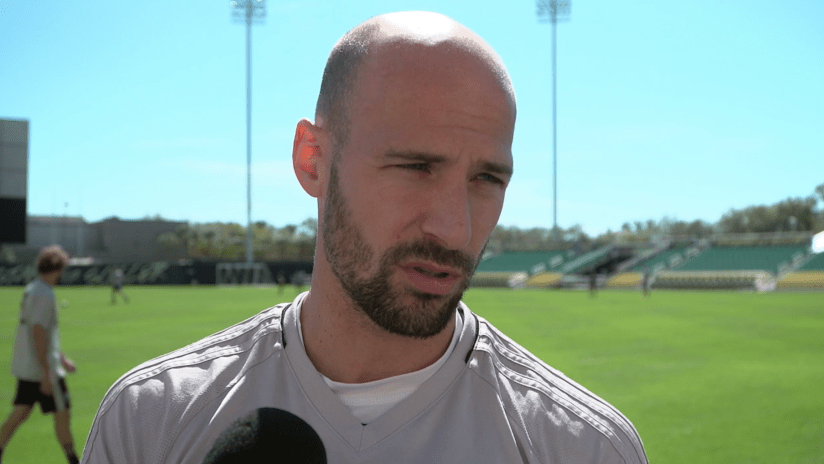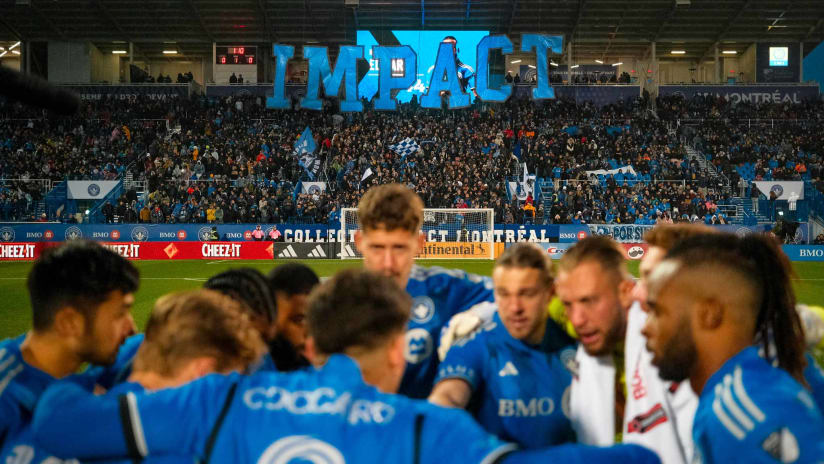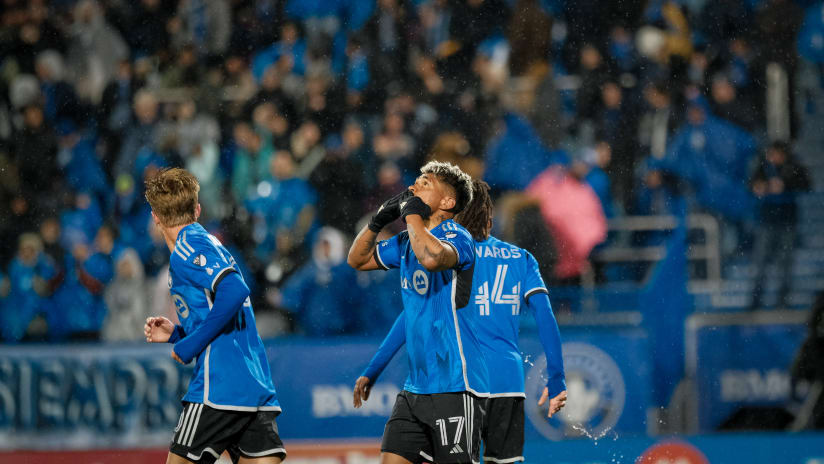Laurent Ciman, Chris Duvall and assistant coach Wilfried Nancy talk with Impact Media
The cliché goes that while attack wins games, defence wins championships. Impact Media thus spoke with members of the Bleu-blanc-noir’s defensive unit: general Laurent Ciman, newcomer Chris Duvall and assistant coach Wilfried Nancy, whose responsibilities include defensive organization. We talked, among other things, about building from the back with the defenders, as well as the challenges for the back four – and for the whole team – to stay balanced.
Defending with the ball
Why do defenders exchange so many passes sometimes? Why play back to the goalkeeper when it looks like there is space available forward? Defenders must make sure that they put players in front of them in good dispositions to control the ball and find space, to prevent turnovers. They are the unlucky ones who have only the goalkeeper behind them to repair their mistakes, which can be costly. As such, they have to be meticulous and careful.
“It is something I like, building cleanly,” said Laurent Ciman. “It is what the coach wants. We try to decrease the number of long balls we play and to build from the back. We have to make a decision quickly, but still give the time to the opponent to come and press, to leave your teammates with space to exploit and to find the free player. We have to stretch the play, use the space, and the goalkeeper who has a big role to play in this. It is something we work on well in training.”
“The idea is to go forward as much as possible,” explains Wilfried Nancy. “The defenders are the first passers; for them, scoring goals is eliminating lines. To do this, they have to move the ball sideways to find openings, so that the ball can move forward. It is a collective association between the ball carrier, of course, but mostly with the players who do not have the ball. The players up the field, midfielders or forwards, need to be available. Of course, the forward pass is good, but the negative pass is good too, sometimes. It allows us to restart the action.”
Staying balanced
Head coach Mauro Biello often mentions the necessity for the attack to unbalance the opposition to be able to create chances. On the flip side, how can a defensive unit stay organized and balanced?
“A huge part of staying balanced is communication,” says Chris Duvall. “You watch our games, you’ll see our back line talking the most, not only to each other, but also to the midfielders, making sure everyone is organized, as we are the ones who see the field the most, with the goalkeeper.”
“To prevent being unbalanced, we need to reduce uncertainties,” follows up Wilfried Nancy. “Defenders need to put as many certainties as they can between them. The idea is to work on collective play marks: how to move, where is the ball, is the ball carrier on target or not. But it is also to be able to work at a high intensity. At the highest level, you need to repeat the efforts and have the lucidity to make the right move at the right time. For defenders, it can be frustrating: they think they are in a good position, but there might be a one-metre delay between them. But the five players behind are dependent on what the five players further forward will do. The more connected we are, the better it is in the game. The better we attack, the better we will defend, as everyone will be well positioned to recover the ball. There is an important collective notion.”
CFMTL Media
The art of defending





